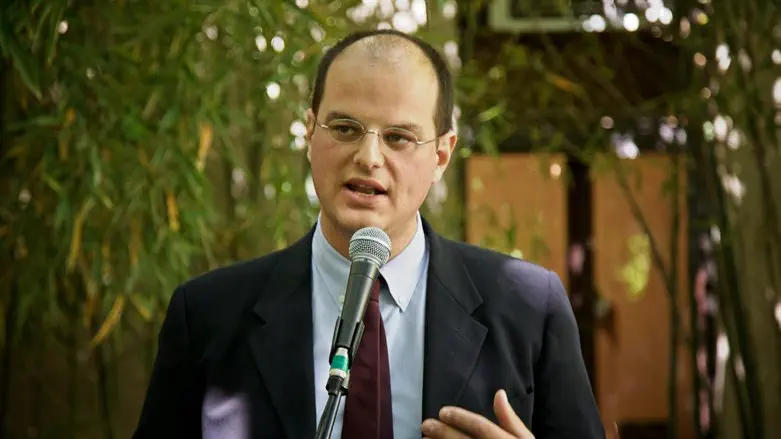
Islam was sleeping, it seemed like a dead religion. Then came the imam with the black turban of the descendants of the Prophet. He is the man who would awaken Islam with the greed of the apocalypse and the permanent bloodbath.
Now we are struck silent by these faces of Iranian men and women whom the mullahs execute early in the morning in this country devastated by the "Islamic revolution". A revolution that was hailed, defended, justified and sung to by the crème of Western and European progressive culture, including that of Italy.
- It was Iran, with the saga of Salman Rushdie, that first sentenced a writer to be killed because of his criticism of Islam.
- The hijab was first distributed by the Iranian embassy in Algiers.
- In Tunisia, the secular government was excommunicated by Iranian fundamentalists after 1981, when the Tunisian government banned the use of the headscarf in schools and public offices.
Today, Iran is ninth in Open Doors' list of the ten worst countries for Christians.
There were no Taliban, ISIS or Boko Haram then. No one before Khomeini had dared to do things of this nature. For the first time in a hundred years, the ayatollah brought back the death penalty for an "adulteress" in Shiraz. Stoned, along with 51 others since 1979. Ali Montazeri, the successor indicated by Khomeini, who once called him "the fruit of my life", will write: "The rest of the world believes that the only activity practiced in Iran is killing."
In an interview with Khomeini on September 27, 1979, Italian writer Oriana Fallaci asked him if it was right to have shot a "poor prostitute". “If your finger suffered from gangrene, what would you do?” Khomeini replied. “Do you let the whole hand, and then the body, get gangrene, or cut off the finger? What brings corruption to an entire country and its people must be rooted out, like the tares that infest a wheat field… We must eliminate corruption”.
Eight Christians killed for their faith in Iran by the Islamic Revolution were remembered recently at a memorial service in London. And there are the violent persecutions of Jews and Armenians, Zoroastrians, Sunnis, Ishmaelites…
In 1988, the year Rushdie's “The Satanic Verses” appeared, torture and executions were on the rise in prisons across the Islamic Republic. Khomeini indicated Ali ibn Abi Talib, cousin and son-in-law of the Prophet Mohammed and first Shiite imam, as the model that justifies these crimes: "If the commander of the faithful [Ali] was always casual, he would not have drawn his sword and would not have killed 700 in one go. The last people who rose up against him were against Islam, so he killed every last one of them."
In a fatwa, an elderly and sick Khomeini ordered the prisons to be emptied and the inmates killed to the last one. Thirty thousand dead in all, reformers, dissidents, political opponents, writers. It is estimated that between 4,000 and 6,000 homosexuals have been executed by Iran in forty years of the Islamic revolution. The International Observatory of Human Rights has recorded 129 cases of amputees in the last twenty years. And Iran is still today the main perpetrator of execution of minors. At least 73 minors executed from 2005 to 2015.
The mystery, however, is how Khomeini was able to attract the ranks of secular Europeans and American liberals, libertines and materialists, structuralists and feminists, existentialists and theorists of the sexual revolution, up to communists of all sorts. Never mind that the ayatollah had defined secularism as "the work of Satan" and the Jews ("may God sink them") as the most dangerous enemies, he was angry with music ("it generates immorality and lust") and said that non-Muslims are "impure".
In his Parisian exile in Neauphle-le-Château, from his villa in the hills a few kilometers from Paris, Khomeini was pampered day and night by journalists and intellectuals of the global left. Everyone wanted to touch and talk to the old ember-eyed imam. For weeks, the cottage in Neauphle-le-Château and the adjoining snow-covered marquee-mosque were transformed into the headquarters of the Islamic revolution and its international press centre.
To name a few:
- The philosopher Louis Rougier and the historian of the French Revolution Claude Manceron went to visit him, enraptured.
- Vincent Monteil, a former French military attaché in the Iranian capital, even converted to Islam.
- Rougier wrote an essay comparing Khomeini to David triumphing over Goliath.
- Andrew Young, the ambassador to the United Nations under the Carter administration, said Khomeini was "a social democrat" and compared his Islamic revolution to the American civil rights movement.
- The American ambassador in Tehran, William Sullivan, compared the imam to Gandhi.
- Richard Falk, a Princeton jurist and future UN envoy to the Middle East with an anti-Israel stance, in the New York Times warmed himself to the fire of the Islamic revolution.
- Iranologist Richard Cottam in the Washington Post defined Khomeini as "moderate and centrist", a hermit who was not interested in power but who, once the Shah was defeated, would retire to the holy city of Qom. Of course, the exact opposite happened.
- From France, the poet Jean Genet, unaware of what mullahs were doing to homosexuals like him, expressed sympathy for Khomeini because he had dared to oppose the West.
- So did Jean-Paul Sartre and Simone de Beauvoir. Sartre went so far as to declare: "I have no religion, but if I had to choose one, it would be that of Shariati" (Islam).
Libération, the newspaper of the left, headline: "Victorious insurrection in Tehran". Entire front page to Khomeini's glory.
Marc Kravetz, the newspaper's special envoy and former leader of May '68 turned reporter, recounts the "first big night" of the Iranian revolution: "Around 9 pm we heard the first cries. A long and modulated scream coming from the depths of the throat. Allahou Akhbar. It was no longer a slogan, it was no longer a cry of alarm, but pure music, beautiful as the song of wolves. Allahou Akhbar. On all the roofs of the city, from north to south, from east to west, the voices answered each other. Allahou Akhbar. The cry of holy war found its liberating energy in the night, broken from afar by the bursts of machine guns".
For the occasion, Serge July, director of Libération, was also sent specifically to Tehran, from where he writes: "Joy has entered Tehran. Black is everywhere. On the turbans of the 1,100,000 descendants of the Prophet, on the walls of the buildings of the Tehran Polytechnic. The veil of Iranian women is a symbol of struggle".
We are still there, with the left marching to the cry of "Allahu Akbar", but this time in Paris.
The journalist André Fontaine, director of Le Monde, compared Khomeini to John Paul II in an article entitled "The return of the divine", while the philosopher Jacques Madaule, referring to the role of Khomeini, wrote an article in the Monde entitled "The voice of the people” in which he wondered if “his movement will not open the doors to the future of humanity”.
Michel Foucault, the philosopher, in famous articles in the Corriere della Sera and in the Nouvel Observateur managed to praise Khomeini's enterprise as "the first great insurrection against global systems, the most modern form of revolt", defining the ayatollah “the holy man exiled to Paris”. L'Humanité, organ of the French communists, defined the imam as "the Islamic Lenin".
The ayatollah who had organized everything from Paris, left behind piles of corpses with which he wanted to build the antechamber of a paradise already built on earth, like communism, and which our elites had mistaken for "democracy" and "progress ”.
Crocodile tears are shed today. They are worthless. That was the beginning of the period of great Western illusion and complicity, when the "progressives" believed they could dominate the Islamic locomotive. Illusion and complicity that continue to this day.
